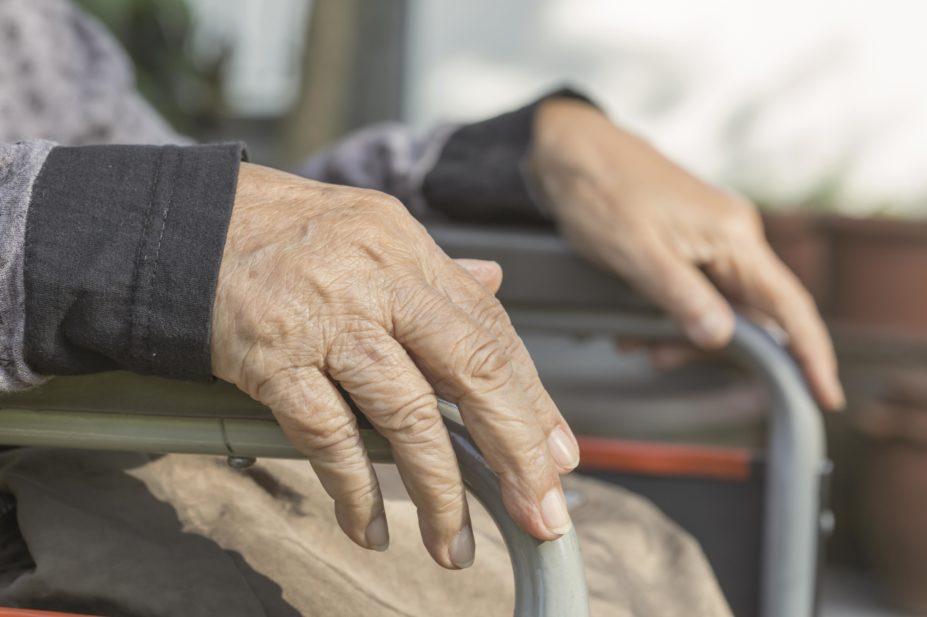
Shutterstock
More than 70% of older patients potentially miss out on the drugs they need and these prescribing omissions, also known as medication underuse, are associated with a decreased quality of life, according to new research.
In a study of 989 patients in Germany, with a mean age of 70.5 years at first follow-up, medication underuse was identified in 70.3% of patients at an initial home visit. This percentage rose to 73.2% at a second home visit, which was made, on average, 2.7 years later. Study participants were each taking, on average, 5.4 drugs.
A screening tool known as START-2 (screening to alert to right treatment), which uses criteria designed to alert prescribers to appropriate treatments, was used to identify medical conditions and indicated drugs.
“We found a pronounced association with a reduced quality of life when indicated beneficial drugs were being withheld,” say the researchers, who were led by Walter Haefeli from the department of clinical pharmacology and pharmacoepidemiology at the University of Heidelberg, Germany.
“Our data suggest that withholding one beneficial drug might reduce the patient’s quality of life to an extent that is similar to the natural decline in this age group within five years,” they add.
Patients could be split into roughly three groups based on their status: roughly a third of patients were not withheld an indicated drug; one third were withheld one indicated drug and one third were withheld more than one indicated drug. The data were compiled from information self-reported by patients; information from the corresponding GP; and data collected by a study physician during the home visits.
According to the results published in the European Journal of Clinical Pharmacology
[1]
(2016;72:877–885), withholding a medication was associated with decreased patient-reported quality of life, as measured using EQ-VAS, a visual analogue scale, and EQ-5D, a self-report questionnaire, two standard tools used to assess health status. The authors say this finding highlights the need to assess the potential causality between omitted drugs and quality of life in a prospective controlled investigation.
During the 2.7-year follow-up period, underuse of respiratory drugs decreased as did underuse of beta blockers, however, underuse of all other medicines increased. Patients with better cognitive function were less likely to be subject to medication underuse (odds ratio [OR] 0.93, 95% confidence interval [CI] 0.87-0.99; P=0.022).
Patients who visited their GP more frequently (OR per visit 1.07, CI 1.01- 1.14; P=0.033) and those with a worse health status were at increased risk of medication underuse.
However, an overall increase in the number of medicines used lowered the risk of missing out on an indicated drug. The authors say that although indiscriminate prescriptions may pose risks resulting from drug interactions, in the majority of cases these interactions can be managed with dose adjustments or different formulations.
Commenting on the study, Nina Barnett, consultant pharmacist in older patients at North West London NHS Trust, says there is a focus on polypharmacy and deprescribing within healthcare at the moment. “But it’s really important for us to be aware that some older patients don’t get the medicines they need,” she says.
“It’s very interesting that those who are cognitively impaired are especially at risk,” she adds. “It might be that these patients are sicker, and the GP is wondering whether to give them another pill. But we don’t want a patient to miss out on a medication that would help them.”
Barnett emphasises that decisions about medicines must always be made on an individual basis. And she recommends that pharmacists become familiar with validated tools like START so they can recognise if a patient might be missing an indicated medicine.
Both Barnett and the authors emphasise that the study did not take non-adherence into account, which also contributes to the success (or not) of pharmacotherapy.
References
[1] Meid AD, Quinzler R, Groll A et al. Longitudinal evaluation of medication underuse in older outpatients and its association with quality of life. European Journal of Clinical Pharmacology 2016;72:877–885. doi: 10.1007/s00228-016-2047-8


